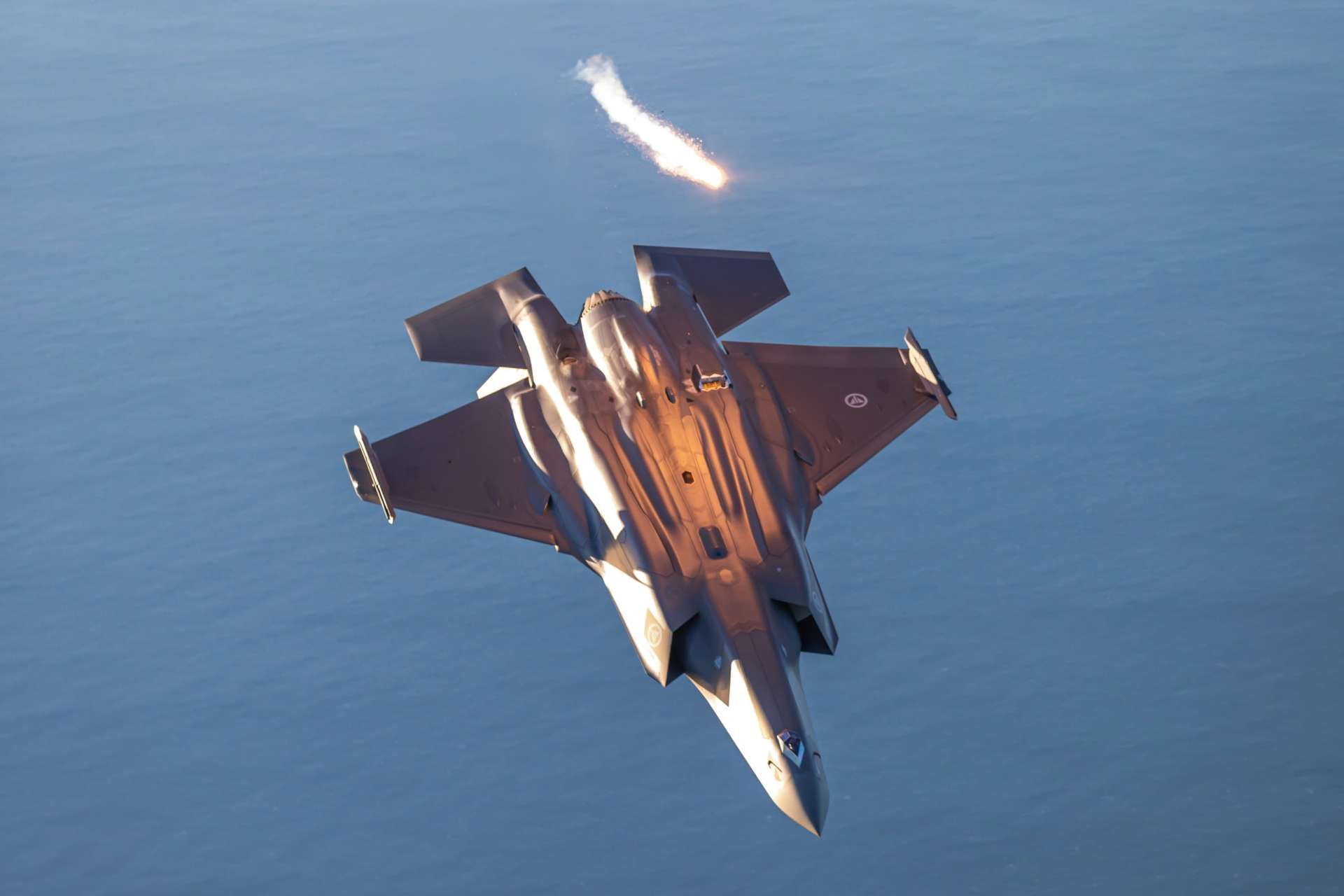Breaking news
Norway Aims to Use Biofuel for Its F-35 Multirole Fighters.
The Norwegian Armed Forces have announced an ambitious initiative to have their F-35 fighters fly with biofuel by the end of the year, as indicated on the Norwegian Ministry of Defense's X account on May 14, 2024. This initiative is a historic first for Norway, as none of its F-35s have yet used biofuel. This project aims to demonstrate the viability of biofuels in high-tech military operations.
Follow Army Recognition on Google News at this link

Norwegian Army aims to use biofuel for its F-35. (Picture source: Norwegian MoD)
Transitioning to biofuel presents several technical and logistical challenges, as biofuels must meet strict standards to ensure they do not affect the performance or safety of fighter jets. However, the potential benefits are considerable. In addition to reducing carbon emissions, using biofuel can contribute to energy security by reducing dependence on traditional fossil fuels. It is surprising to see Norway develop a biofuel despite not lacking in fossil fuels.
The idea of using biofuels in military aviation is not entirely new. Several countries have already conducted tests to evaluate the feasibility and efficiency of biofuels in combat aircraft. In 2010, the US Air Force flew an F-22 Raptor with a mixture of biofuel and conventional fuel, demonstrating that biofuels could be used without affecting the aircraft's performance. The US Navy also conducted tests with biofuels in its F/A-18 Super Hornet fighters, and in 2012, the "Green Hornet" flew with a 50% biofuel blend made from camelina oil. In 2014, the Royal Air Force conducted a test flight of a Tornado GR4 using a blend of traditional fuel and biofuel derived from microalgae. Countries like France, Germany, and Brazil have also explored the use of biofuels for their air forces, although these tests are often less publicized than those in the United States.
Biofuels offer several tactical and strategic advantages. One of the most significant strategic advantages is reducing dependence on imported fossil fuel sources, as biofuels can be produced locally from various raw materials such as energy crops, agricultural residues, and organic waste, thereby enhancing national energy security. In times of conflict, the ability to produce fuel locally can reduce the vulnerability of armed forces and ensure a more stable and resilient energy supply. Using biofuels can also reduce greenhouse gas emissions, improving the environmental footprint of military operations and contributing to compliance with environmental regulations and international emission reduction goals.
The F-35 Lightning II, developed by Lockheed Martin, is a fifth-generation multi-role aircraft designed to perform a wide range of combat missions. In service since 2015 for the F-35A version, 2016 for the F-35B, and 2019 for the F-35C, this sophisticated aircraft embodies the evolution of modern air power. The first flight of the F-35B model took place on June 11, 2008.
The F-35 is equipped with a Pratt & Whitney F135 engine, a turbojet with an afterburner capable of providing 178 kN of thrust. This unique engine allows the aircraft to reach a maximum speed of 1,700 km/h, or Mach 1.6+, at cruising altitude. Dimensions vary slightly between versions, with a wingspan of 10.40 m for the F-35A and F-35B, and 13.10 m for the F-35C. The length is 15.85 m and the height is 5.28 m, with a wing area ranging from 42.7 m² for the F-35A and F-35B to 57.6 m² for the F-35C.
The F-35 can support a maximum weight of 25,600 kg, with an empty weight of 13,170 kg for the F-35A, 14,580 kg for the F-35B, and 14,550 kg for the F-35C. Its range varies by model, reaching 1,080 km for the F-35A, 869 km for the F-35B, and 1,138 km for the F-35C. The aircraft's endurance is over 2,800 km, making it a significant strategic asset for extended operations.
In terms of performance, the F-35 has a thrust-to-weight ratio greater than 1 and can withstand load factors up to +9 G for the F-35A, and +7 G for the F-35B and F-35C. Its internal armament includes a GAU-22 25 mm cannon with 180 rounds, mounted in an external pod on the F-35B. The two internal weapon bays can each carry two pylons, allowing for up to 2,800 kg of armament. Additionally, the aircraft can carry 6,800 kg of external armament distributed on six pylons.
It remains to be seen what impact this biofuel will have on the performance of the Norwegian F-35 and the cost of developing and producing it. This technology could still interest other nations with less access to fossil fuels, making it a development to follow closely.


























